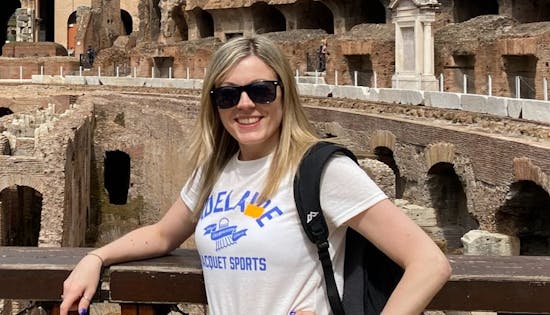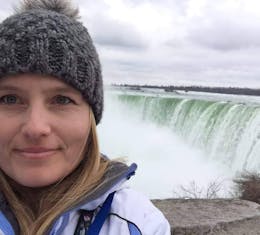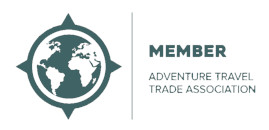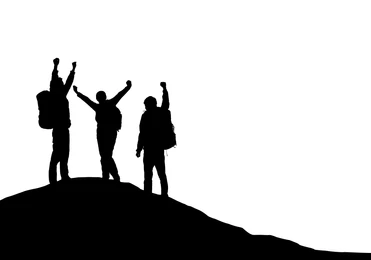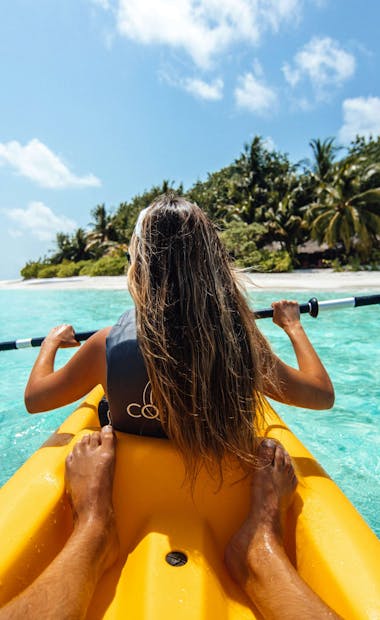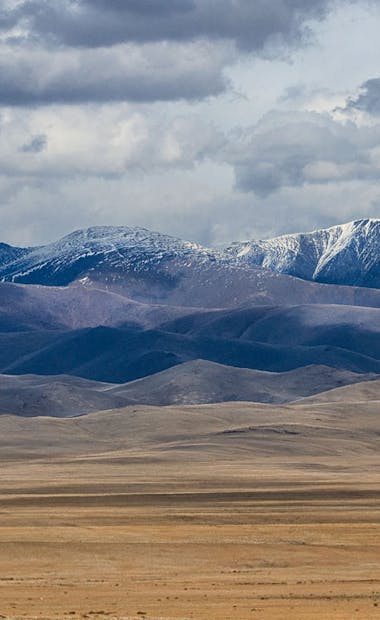
Mongolia Tours
Vast, wild and untouched landscapes with unique nomadic culture
Popular tours
- Save20%
 View Tour
View TourMongolia Explorer 2026 - 14 Days
- Ulan Bator to Ulan Bator
- Age group: 16 - 79
- Max group size: 16
Was:£2,935From£2,336 - Save11%
 View Tour
View TourWild Mongolia - 15 Days
- Ulan Bator to Ulan Bator
- Age group: 15 - 99
- Max group size: 12
Was:£2,880From£2,566 - Save10%
 View Tour
View TourNomadic Mongolia - 14 Days
- Ulan Bator to Ulan Bator
- Age group: 12 - 100
- Max group size: 14
Was:£2,429From£2,175 - Save6%
 View Tour
View TourMongolia's Naadam Festival - 15 Days
- Ulan Bator to Ulan Bator
- Age group: 15 - 99
- Max group size: 16
Was:£3,385From£3,184  View Tour
View TourJourneys: Discover Mongolia - 14 Days
- Ulan Bator to Ulan Bator
- Age group: 12 - 100
- Max group size: 14
Was:£3,879From£3,860- Save6%
 View Tour
View TourMongolia Expedition: Reindeer Herders - 14 Days
- Ulan Bator to Ulan Bator
- Age group: 15 - 99
- Max group size: 12
Was:£2,830From£2,662
Mongolia Tours
Welcome to the untamed beauty of Mongolia, a land of vast landscapes, ancient traditions, and a spirit that echoes across the endless steppes. Step into a world where time seems to stand still, where the nomadic culture still thrives, and where the untouched wilderness beckons adventurous souls. Our travel agency specialises in small group guided tours, offering you an unforgettable journey through this extraordinary country.
Mongolia is a dream destination for those seeking a unique and immersive experience. As you embark on our meticulously crafted Mongolia tours, you'll find yourself immersed in a land that captivates with its diversity and raw beauty. While trekking across the stunning Mongolian countryside is undoubtedly a highlight, there is so much more to discover.
Let us take you on a journey through the history and culture of this enchanting nation. Explore the ancient capital of Ulaanbaatar, where modernity meets tradition in a vibrant clash of colors and sounds. Visit the Gandan Monastery, an oasis of serenity amidst the bustling city, where Buddhist monks chant the timeless mantras.
Venture further into the heart of Mongolia and witness the nomadic way of life that has sustained for centuries. Encounter warm and welcoming herders who graciously share their customs, stories, and traditional cuisine. Experience the thrill of riding horses across the endless steppe, feeling the freedom of the open land beneath you.
Marvel at the wonder of the Gobi Desert, a vast expanse of golden sand dunes that seem to stretch forever. Discover the Flaming Cliffs, a paleontologist's paradise, where dinosaur fossils have been unearthed, whispering tales from a prehistoric era.
For those seeking a glimpse into Mongolia's rich history, our tours will transport you to the ancient capital of Karakorum, once a bustling hub of the Mongol Empire. Explore the ruins of Erdene Zuu Monastery, a testament to the country's spiritual heritage.
Immerse yourself in the culture of the Kazakh people in the far western region of Bayan-Olgii. Witness the thrilling spectacle of the traditional Golden Eagle Festival, where skilled hunters showcase their bond with these majestic birds of prey.
As the sun sets over the vast Mongolian horizon, you'll find yourself under a sky filled with a breathtaking display of stars. Experience the nomadic way of life firsthand by staying in traditional gers (yurts), where the simplicity of existence harmonises with the beauty of the surrounding nature.
Our small group guided tours offer an authentic and intimate experience, led by knowledgeable guides who will share their passion for Mongolia's rich heritage and breathtaking landscapes. We carefully curate our itineraries to ensure a perfect blend of adventure, cultural immersion, and relaxation.
Embark on a journey that will leave an indelible mark on your soul. Explore Mongolia with us, and unlock the secrets of this extraordinary land. Let the rhythm of the nomadic lifestyle, the majestic landscapes, and the warm hospitality of the Mongolian people capture your heart and ignite your spirit of adventure. Discover the beauty of Mongolia with our unforgettable tours.
When is the best time to visit Mongolia?
The best time to visit Mongolia largely depends on your interests and preferred activities. Mongolia experiences extreme continental weather, with hot summers and bitterly cold winters. Here's a breakdown of the seasons to help you plan your trip:
Summer (June to August):
- Summer is the peak tourist season in Mongolia, with warm temperatures and longer daylight hours.
- This is an ideal time for outdoor activities such as trekking, horseback riding, and exploring the vast steppe.
- Naadam Festival, held in July, is a highlight of the summer season, featuring traditional Mongolian sports and cultural performances.
Autumn (September to October):
- Autumn brings pleasant temperatures, cooler evenings, and stunning landscapes as the foliage turns golden.
- It's a great time for photography enthusiasts to capture the vibrant colours and the changing scenery.
- Nomadic families move their livestock to winter pastures during this time, providing a glimpse into the traditional herding lifestyle.
Winter (November to February):
- Winter in Mongolia is extremely cold, with temperatures dropping well below freezing.
- If you're prepared for the frigid temperatures, winter offers a unique experience, especially for those interested in winter activities like ice fishing, dog sledding, and witnessing the magnificent landscapes blanketed in snow.
- The Ice Festival on Lake Khovsgol in February is a popular event, showcasing ice sculptures, ice-skating, and traditional games.
Spring (March to May):
- Spring brings a gradual transition from winter to warmer weather, with melting snow and budding vegetation.
- It's a good time to observe the awakening of nature and witness the birth of baby animals.
- However, the weather can be unpredictable during spring, with occasional snowstorms and fluctuating temperatures.
Considering the diverse seasons and activities, the best time to visit Mongolia for most travelelrs is during the summer months of June to August when the weather is relatively warm and conducive to outdoor exploration. However, if you're seeking unique experiences like the Naadam Festival or winter activities, you may want to plan your visit accordingly.
Remember to pack appropriate clothing and gear for the specific season you choose to visit, as the weather conditions can be challenging, especially during winter.
Will I require a visa for my visit to Mongolia?
Yes, most visitors to Mongolia will require a visa to enter the country. However, the visa requirements may vary depending on your nationality and the purpose and duration of your stay. Here are some general guidelines:
Visa-free countries: Citizens of certain countries are exempt from obtaining a visa for a specified period. For example, citizens of Japan, Malaysia, Singapore, the United States, and many European Union countries can stay in Mongolia visa-free for up to 30 days. The duration and conditions of visa-free entry may vary, so it's essential to check with the Mongolian embassy or consulate in your home country for the most up-to-date information.
Tourist visa: If you are not eligible for visa-free entry, you will need to apply for a tourist visa. This typically allows you to stay in Mongolia for up to 30 days. The application process usually involves submitting a completed visa application form, a passport-sized photo, a valid passport with at least six months of validity, and a visa fee. You may also need to provide additional documents such as a travel itinerary, hotel reservations, and proof of travel insurance.
Visa extensions: If you wish to stay in Mongolia for a longer period, you can apply for a visa extension at the Mongolian Immigration Agency in Ulaanbaatar. Extensions are typically granted for up to 30 days, but they are subject to approval, and you may be required to provide a valid reason for the extension.
It's important to note that visa requirements can change, so it's advisable to check with the Mongolian embassy or consulate in your country well in advance of your planned visit. They will provide you with the most accurate and up-to-date information regarding visa requirements, application procedures, and any supporting documents that may be required.
Ensure that your passport is valid for at least six months beyond your intended departure date from Mongolia, and make sure to allow ample time for visa processing to avoid any last-minute complications.
What are the main attractions when visiting Mongolia?
When visiting Mongolia, you'll discover a land filled with extraordinary landscapes, rich cultural heritage, and unique experiences. Here are some of the main attractions that make Mongolia a truly captivating destination:
The Gobi Desert: Explore the vastness of the Gobi Desert, one of the world's most famous and diverse desert ecosystems. Marvel at towering sand dunes, rugged mountains, stunning canyons, and the legendary Flaming Cliffs, known for their dinosaur fossils.
Khovsgol Lake: Known as the "Blue Pearl of Mongolia," Khovsgol Lake is a pristine and stunningly beautiful freshwater lake located in the northern part of the country. Surrounded by majestic mountains and lush forests, it offers opportunities for boating, fishing, hiking, and horseback riding.
Terelj National Park: Located near the capital city of Ulaanbaatar, Terelj National Park is a nature lover's paradise. Discover the unique rock formations, visit the famous Turtle Rock, and hike through picturesque valleys dotted with nomadic herders' gers (traditional dwellings).
Hustai National Park: Experience the wonder of the Mongolian steppe at Hustai National Park, home to the endangered Przewalski's horse, also known as takhi. Enjoy wildlife spotting, birdwatching, and witness the successful conservation efforts that have led to the reintroduction of these horses into the wild.
Karakorum and Erdene Zuu Monastery: Explore the ancient capital of the Mongol Empire, Karakorum, and visit the impressive Erdene Zuu Monastery. Immerse yourself in Mongolian history and admire the architectural beauty of this 16th-century monastery, surrounded by a stone wall with 108 stupas.
Naadam Festival: Experience the excitement of Mongolia's biggest and most celebrated event, the Naadam Festival. Held annually in July, it showcases traditional Mongolian sports such as horse racing, wrestling, and archery, along with vibrant cultural performances and festivities.
Nomadic Culture: Embrace the nomadic way of life and immerse yourself in the warm hospitality of Mongolian herders. Stay in traditional 'gers', ride horses across the steppe, learn about their customs, and savour traditional Mongolian cuisine.
Wildlife and Birdwatching: Mongolia boasts diverse wildlife, including rare species such as the snow leopard, argali sheep, and Siberian ibex. Birdwatchers will be delighted by the opportunity to spot a wide variety of migratory and resident bird species.
Buddhist Monasteries: Discover the spiritual side of Mongolia by visiting ancient Buddhist monasteries. Gandan Monastery in Ulaanbaatar and Amarbayasgalant Monastery in the northern region are among the most renowned and significant monastic complexes.
Nomadic Festivals: Attend local festivals like the Golden Eagle Festival in Bayan-Olgii, where skilled Kazakh hunters showcase their hunting prowess with trained golden eagles. Experience the vibrant traditions, folk music, and dances that are an integral part of Mongolian culture.
These attractions offer a glimpse into the rich natural and cultural heritage of Mongolia. Whether you seek adventure, cultural immersion, or a peaceful escape into pristine landscapes, Mongolia has something extraordinary to offer every traveller.
What is the local currency in Mongolia, and can I use credit cards?
The local currency in Mongolia is the Mongolian Tugrik (MNT). When traveling to Mongolia, it is recommended to carry some cash in local currency for smaller expenses and places where credit cards may not be widely accepted, especially in rural areas. Here are some key points regarding currency and credit card usage in Mongolia:
Currency Exchange: It's advisable to exchange your currency into Mongolian Tugrik upon arrival in Mongolia. You can do so at the airport, local banks, or authorised exchange offices in major cities. It's recommended to exchange your money at reputable establishments to ensure fair rates.
Cash Usage: While cash is widely accepted in Mongolia, especially in local markets, smaller shops, and rural areas, it may be more challenging to use credit cards for day-to-day expenses. It's a good idea to have sufficient cash on hand for meals, transportation, and shopping in areas where card payment options may be limited.
Credit Card Usage: Credit cards, particularly Visa and Mastercard, are generally accepted at hotels, larger restaurants, and some retail stores in major cities like Ulaanbaatar. However, it's important to note that credit card acceptance may be less common in smaller towns, remote areas, and establishments catering to nomadic communities. It's advisable to carry cash as a backup in case of card payment issues or limited card acceptance.
ATM Availability: ATMs (Automated Teller Machines) are available in major cities and towns in Mongolia. They accept international debit and credit cards, allowing you to withdraw cash in local currency. However, it's important to inform your bank about your travel plans to ensure your cards are authorised for use in Mongolia. Do note that in remote or less populated areas, ATM availability may be limited, so it's best to withdraw cash in advance if you plan to travel to such regions.
Currency Exchange Tips: When exchanging currency or using ATMs, it's recommended to carry newer, clean, and undamaged banknotes, as older or damaged bills may not be accepted or may receive a lower exchange rate. It's also advisable to keep your currency exchange receipts, as they may be required when converting any remaining Mongolian Tugrik back to your home currency.
To ensure a hassle-free experience, it's always a good idea to carry a mix of cash and cards, informing your bank about your travel plans, and being prepared for situations where cash is the preferred payment method.
Will I require any vaccinations for my visit to Mongolia?
Before traveling to Mongolia, it is advisable to consult with a healthcare professional or travel medicine specialist to assess your specific health needs and vaccination requirements. They will consider factors such as your medical history, current health status, planned activities, and the duration of your stay in Mongolia. Here are some vaccinations commonly recommended for travellers to Mongolia:
Routine Vaccinations: Ensure that you are up to date on routine vaccinations, including measles-mumps-rubella (MMR), diphtheria-tetanus-pertussis (DTaP), varicella (chickenpox), polio, and influenza. These vaccinations are generally recommended for all travellers regardless of their destination.
Hepatitis A and B: Hepatitis A and B vaccinations are recommended for travellers to Mongolia, as these diseases can be contracted through contaminated food or water, or through sexual contact or exposure to contaminated blood.
Typhoid: Typhoid vaccination is recommended, especially if you plan to travel outside major cities and may have limited access to clean and safe food and water.
Rabies: Mongolia has a moderate risk of rabies, particularly in rural areas. If you plan to spend time in rural or remote locations or engage in activities that may bring you into contact with animals, such as wildlife encounters or volunteering with animals, a rabies vaccination may be recommended.
Japanese Encephalitis: If you plan to visit Mongolia for an extended period, particularly during the summer months, or if your travel involves spending significant time in rural agricultural areas, a Japanese encephalitis vaccination may be advised.
Tick-Borne Encephalitis: If you plan to visit forested and rural areas in Mongolia, particularly during the warmer months, a tick-borne encephalitis vaccination may be recommended.
Remember that vaccination recommendations may change over time, so it is important to consult with a healthcare professional or travel medicine specialist well in advance of your trip to ensure you receive the appropriate vaccinations. Additionally, it's essential to take precautions to prevent illnesses during your trip, such as practicing good hand hygiene, drinking safe and clean water, and taking measures to avoid insect bites.
Is Mongolia a safe destination to visit?
Mongolia is generally considered a safe destination for travellers. The country has a relatively low crime rate, and violent crimes against tourists are rare. However, as with any travel destination, it's important to take certain precautions to ensure your safety and well-being. Here are some tips to help you have a safe trip to Mongolia:
Personal Safety: Exercise common sense and be aware of your surroundings, especially in crowded areas or tourist hotspots. Keep an eye on your belongings, avoid displaying signs of wealth, and use secure transportation options.
Transportation Safety: When using public transportation or taxis, choose reputable companies and licensed drivers. Ensure that vehicles are in good condition and follow basic safety practices such as wearing seatbelts.
Nature and Outdoor Safety: Mongolia's vast landscapes offer incredible outdoor adventures, but it's crucial to be well-prepared and informed when venturing into remote areas. Take necessary precautions, have proper equipment, and inform others about your travel plans. Be aware of weather conditions, potential hazards, and wildlife encounters.
Cultural Sensitivity: Respect local customs, traditions, and cultural norms. Mongolians are generally friendly and hospitable, so it's important to be polite, observe local customs, and seek permission before photographing individuals or religious sites.
Health and Hygiene: Prioritise your health and well-being by practicing good hygiene, including frequent hand washing and consuming safe and clean food and water. It's also recommended to have travel insurance that covers medical expenses and emergency evacuation.
Outdoor Adventures: If you plan on engaging in outdoor activities such as trekking, horseback riding, or camping, consider going with reputable tour operators who have experienced guides and adhere to safety standards.
Wildlife Safety: Mongolia is home to unique wildlife, including endangered species. Maintain a safe distance and avoid approaching or feeding wild animals. If participating in activities like horseback riding or camel riding, ensure that the animals are treated well and not overworked.
It's important to stay updated on travel advisories and consult official government sources for the latest information on safety and security in Mongolia before your trip. Taking precautions, using common sense, and being respectful of local customs will greatly contribute to a safe and enjoyable travel experience in Mongolia.
What is the food like in Mongolia?
Mongolian cuisine reflects the nomadic lifestyle and cultural heritage of the country. Traditional Mongolian food is hearty, flavourful, and often centred around meat and dairy products, as livestock farming plays a significant role in the country's economy and culture. Here are some highlights of Mongolian cuisine:
Meat Dishes: Mongolia is renowned for its meat dishes, particularly featuring beef, lamb, and mutton. One of the most iconic Mongolian dishes is "Buur" or "Buurul," which is a type of dumpling filled with meat and steamed. Other popular meat dishes include "Khuushuur" (fried meat pastry), "Khorkhog" (meat and vegetable stew cooked in a metal pot with hot stones), and "Bantan" (meat and vegetable soup).
Dairy Products: As a country with a strong nomadic tradition, dairy products hold a special place in Mongolian cuisine. "Aaruul" is a traditional dried curd made from cow's, goat's, or sheep's milk, which is often enjoyed as a snack or dessert. "Byaslag" is a cheese made from yak's or cow's milk, and "Airag" is a fermented mare's milk that is slightly alcoholic and a staple during summer festivals.
Dumplings and Noodles: Dumplings, known as "Bansh" or "Buz," are a popular food in Mongolia. They are typically filled with minced meat and served with a dipping sauce. Noodles, both hand-pulled and wheat-based, are also commonly consumed and can be found in soups and stir-fried dishes.
Tsuivan: Tsuivan is a traditional Mongolian stir-fried noodle dish that combines sliced meat (often beef or mutton), vegetables, and handmade noodles. It is typically seasoned with spices and soy sauce, resulting in a savory and satisfying meal.
Soups and Stews: Mongolian soups and stews are hearty and nourishing. "Guriltai Shul" is a popular meat and vegetable soup, while "Boodog" is a unique cooking method where the meat, usually marmot or goat, is prepared by placing hot stones inside the carcass, resulting in a roasted and flavorful dish.
Snacks and Sweets: Mongolians enjoy various snacks and sweets. "Borts" is a type of dried meat, often made from beef or lamb, that serves as a portable and high-energy snack. "Boortsog" is a fried dough snack similar to biscuits or cookies, often enjoyed with tea. "Suutei Tsai" is a traditional salty milk tea that is consumed throughout the day.
Vegetarian and vegan options can be more limited in Mongolia, as the cuisine heavily emphasizes meat and dairy products. However, in larger cities like Ulaanbaatar, you can find restaurants and cafes that offer a wider range of international cuisines, including vegetarian and vegan options.
Exploring Mongolian cuisine offers a glimpse into the country's nomadic heritage and provides a unique culinary experience for visitors. Whether you try traditional meat dishes, dairy products, or indulge in local snacks, Mongolian food offers a hearty and distinct taste that reflects the country's cultural identity.
Can I drink the tap water in Mongolia?
It is generally not recommended to drink tap water in Mongolia. While the water in some urban areas, especially in the capital city of Ulaanbaatar, may be treated and safe to drink, it's still advisable for visitors to err on the side of caution and consume bottled water or use other safe water alternatives.
When traveling in Mongolia, it's best to rely on commercially bottled water, which is widely available in stores and supermarkets. Look for sealed bottles and check the expiration date to ensure freshness. It's also a good idea to carry a reusable water bottle and fill it with purified or boiled water when available.
If you find yourself in a situation where bottled water is not readily accessible, you can use water purification methods such as boiling, using water purification tablets, or using a water filter to make tap water safe for consumption. These precautions will help reduce the risk of waterborne diseases and ensure your health and well-being during your trip.
Additionally, when dining out, it's advisable to exercise caution with ice cubes and raw fruits and vegetables that may have been washed with tap water. Opt for peeled fruits, well-cooked meals, and hot beverages from trusted establishments to minimise the risk of foodborne illnesses.
By taking these precautions and being mindful of the water you consume, you can enjoy a safe and healthy trip to Mongolia.
Are there any cultural norms in Mongolia? I should follow?
Yes, Mongolia has its own set of cultural norms and customs that visitors should be aware of and respect. Here are some key cultural norms in Mongolia:
Greetings and Respect: Mongolians value respect and hospitality. When meeting someone for the first time, it is customary to greet them with a firm handshake. When greeting elders or people of higher social status, it is polite to extend your right arm while supporting your right elbow with your left hand. Avoid addressing people by their first names unless given permission or in a casual setting.
Etiquette in Ger (Yurt): If you have the opportunity to visit a traditional Mongolian ger, or yurt, it is important to follow proper etiquette. When entering a ger, it is customary to step over the threshold with your right foot and avoid stepping on the threshold itself. Inside the ger, it is polite to sit on the left side, as the right side is reserved for the head of the household. Show respect for the ger by refraining from pointing your feet towards the fireplace, as it is considered disrespectful.
Gift-Giving: Mongolians appreciate the gesture of gift-giving, especially when visiting someone's home. It is customary to bring a small gift such as sweets, tea, or a souvenir from your home country. When presenting a gift, use both hands as a sign of respect.
Dining Etiquette: Mongolian dining customs are rooted in their nomadic heritage. When invited to a Mongolian meal, it is customary to remove your shoes before entering the home or ger. Wait to be seated and follow the lead of the host or eldest person present. Mongolian meals often involve sharing dishes, so it is polite to wait for the host to start eating before you begin. Accepting food and drink offerings with both hands is a sign of respect. It is considered polite to try a bit of everything offered to you.
Dress Code: Mongolians tend to dress modestly and conservatively. When visiting religious sites or attending formal events, it is appropriate to dress more formally. It is advisable to dress in layers as the weather in Mongolia can vary greatly, especially in rural areas.
Photography: When taking photographs of people, especially locals, it is respectful to ask for permission first. Some individuals, particularly those engaged in traditional or religious activities, may prefer not to be photographed. Respect their wishes and refrain from taking photos without permission.
By respecting these cultural norms and showing an appreciation for Mongolian customs, you can enhance your interactions with the locals, foster positive connections, and have a more meaningful and enjoyable experience in Mongolia.
What should I pack for my trip to Mongolia?
When packing for your trip to Mongolia, it's important to consider the diverse landscapes, varying weather conditions, and cultural aspects of the country. Here's a list of essential items to pack:
Clothing:
- Layered clothing: Mongolia experiences significant temperature fluctuations, so pack lightweight, breathable layers that can be easily added or removed.
- Warm outerwear: Include a waterproof and windproof jacket, fleece or insulated jacket, and a hat or beanie for colder weather.
- Comfortable walking shoes or hiking boots: Choose sturdy footwear suitable for various terrains and activities.
- Long pants and long-sleeved shirts: These will protect you from the sun, insects, and harsh vegetation.
- Swimsuit: If you plan to visit hot springs or enjoy water activities in summer.
- Scarf or shawl: Useful for protection from dust, wind, or as a modest covering when visiting religious sites.
Travel Essentials:
- Travel adapter: Mongolia uses Type C and E sockets, so bring the appropriate adapter if necessary.
- Portable charger: Keep your electronic devices powered during outdoor activities or when electricity is limited.
- Travel-sized toiletries: Carry items such as sunscreen, insect repellent, hand sanitiser, and wet wipes.
- Prescription medications: If you have any specific medical needs, bring an ample supply of necessary medications.
- First aid kit: Include basic medical supplies such as adhesive bandages, antiseptic cream, pain relievers, and any personal medications.
- Travel documents: Carry your passport, visa, travel insurance details, and copies of important documents in a secure and easily accessible place.
Outdoor Gear:
- Daypack: A small backpack for day trips or hikes to carry water, snacks, camera, and other essentials.
- Water bottle: Carry a reusable water bottle for staying hydrated during your travels.
- Sunglasses and hat: Protect yourself from the strong sun, especially in the Gobi Desert.
- Binoculars: Useful for wildlife spotting and enjoying the vast landscapes of Mongolia.
Miscellaneous:
- Cash: Carry enough local currency (Mongolian Tugrik) for smaller establishments and remote areas where card payments may not be accepted.
- Language guidebook or app: English is not widely spoken outside major cities, so having a basic Mongolian language guide can be helpful.
- Travel locks: Keep your belongings secure, especially when staying in shared accommodations.
- Snacks: Pack some non-perishable snacks for long journeys or when food options are limited.
Remember to pack according to the season and activities you plan to engage in. Check the weather forecast for your travel dates and consult with your tour operator or local resources for specific packing recommendations based on your itinerary.
By packing smartly and being prepared for different weather conditions and cultural experiences, you can make the most of your trip to Mongolia and enjoy a comfortable and enjoyable adventure.
What is the golden eagle festival of Mongolia?
The Golden Eagle Festival is an annual cultural event held in Mongolia, showcasing the rich tradition of eagle hunting practiced by the Kazakh ethnic minority. It is a fascinating celebration of the bond between humans and eagles, as well as a showcase of the unique nomadic culture of Mongolia. Here's an overview of the Golden Eagle Festival:
History and Significance: The festival originated as a way for the Kazakh eagle hunters, known as "berkutchi," to demonstrate their hunting skills and honour the cultural heritage of their ancestors. It has grown in popularity and now attracts both locals and international visitors who are captivated by this unique spectacle.
Dates and Location: The festival takes place annually in October in the remote and picturesque Bayan-Ölgii Province in western Mongolia. The region is known for its rugged landscapes, vast steppe, and snow-capped mountains, providing a stunning backdrop for the festival.
Eagle Hunting Competitions: The highlight of the festival is the eagle hunting competitions, where skilled hunters showcase their expertise and the agility of their trained golden eagles. The competitions typically include events such as speed and accuracy tests, as well as displays of the birds' hunting skills by capturing prey.
Cultural Performances and Exhibitions: The festival offers a glimpse into the Kazakh nomadic culture through various cultural performances and exhibitions. Visitors can witness traditional music and dance performances, participate in traditional games and sports, and explore the vibrant local crafts and artworks.
Traditional Costumes and Parades: The festival provides an opportunity to admire the colourful and ornate traditional costumes worn by the eagle hunters and their families. There are parades and ceremonies where participants showcase their attire, creating a visually stunning display of cultural pride.
Photography Opportunities: The Golden Eagle Festival offers incredible opportunities for photography enthusiasts. The sight of majestic golden eagles perched on the hunters' arms against the backdrop of Mongolia's breathtaking landscapes makes for stunning and memorable images.
Attending the Golden Eagle Festival allows visitors to witness a centuries-old tradition, immerse themselves in Mongolian nomadic culture, and gain insights into the unique bond between humans and eagles. It's an extraordinary experience that showcases the country's rich cultural heritage and natural beauty.
What language is spoken in Mongolia?
The official language of Mongolia is Mongolian. Mongolian belongs to the Mongolic language family and is the native language of the majority of the population. Mongolian is written using the Cyrillic script, which was adopted in the 1940s.
In addition to Mongolian, there are also other languages spoken in Mongolia due to its diverse ethnic composition. One notable language is Kazakh, spoken by the Kazakh ethnic minority, particularly in the western province of Bayan-Ölgii. Kazakh is a Turkic language and has its own distinct script.
English is gaining popularity in Mongolia, particularly in urban areas and among younger generations. In major cities and tourist areas, you can find some English speakers, especially in hotels, tourist establishments, and among those involved in the tourism industry. However, outside of these areas, English proficiency may be limited.
It can be beneficial to learn a few basic Mongolian phrases and greetings to facilitate communication and show respect for the local culture. The effort to learn a few words of the local language is often appreciated by Mongolians and can help enhance your interactions during your visit to Mongolia.
What are helpful phrases in Mongolian?
Here are some helpful phrases in Mongolian:
- Hello - Сайн уу (Sain uu)
- Goodbye - Баяртай (Bayartai)
- Thank you - Баярлалаа (Bayarlalaa)
- Yes - Тийм (Tiim)
- No - Үгүй (Ugui)
- Excuse me - Уучлаарай (Uuchlaarai)
- Sorry - Уучлаарай (Uuchlaarai)
- Please - Гэж (Gej)
- How are you? - Та байна уу? (Ta baina uu?)
- I don't understand - Би ойлгомжгүй (Bi oilgomjgui)
- Can you help me? - Туслах боломжтой юу? (Tuslakh bolomjtoi yu?)
- Where is...? - ...хаана байна вэ? (...khana baina ve?)
- What is your name? - Таны нэр юу вэ? (Tany ner yu ve?)
- My name is... - Миний нэр ... (Miniin ner ...)
- I would like... - Би ... хүсэж байна (Bi ... khusej baina)
Remember to pronounce the words phonetically as best as you can, as Mongolian is written in Cyrillic script, which may have different pronunciations from English.
Learning a few basic Mongolian phrases can greatly enhance your interactions with locals and show your appreciation for the culture and language. Mongolians are generally friendly and welcoming, and your efforts to communicate in their language will be well-received.
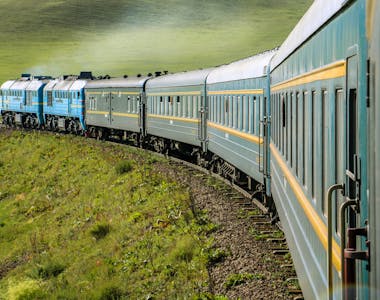
Book With Confidence
Monthly Payments
Spread the costs with no interest or additional fees
Best Price Guarantee
We won't be beaten on price. If you find this adventure at a lower price please get in touch!
Reserve now & pay later
Reserve your adventure today and pay later, free of charge
ATOL protected
Book with confidence
Hold your space today, for free
or book your trip with a deposit and then pay the rest in instalments.
Reserve your flights with us
Add flights to your booking and we'll take care of the rest. You'll get 24/7 support from our team & ATOL protection.
Speak to our experts
Call or email our expert team to find out more and help with ideas and planning.
